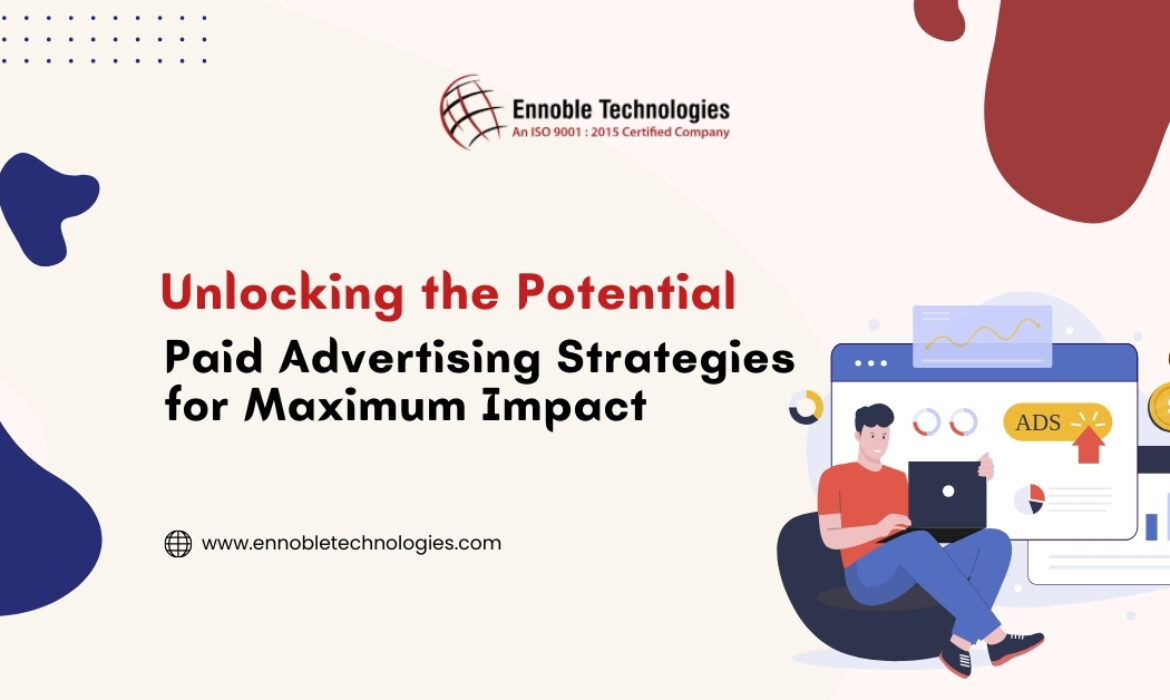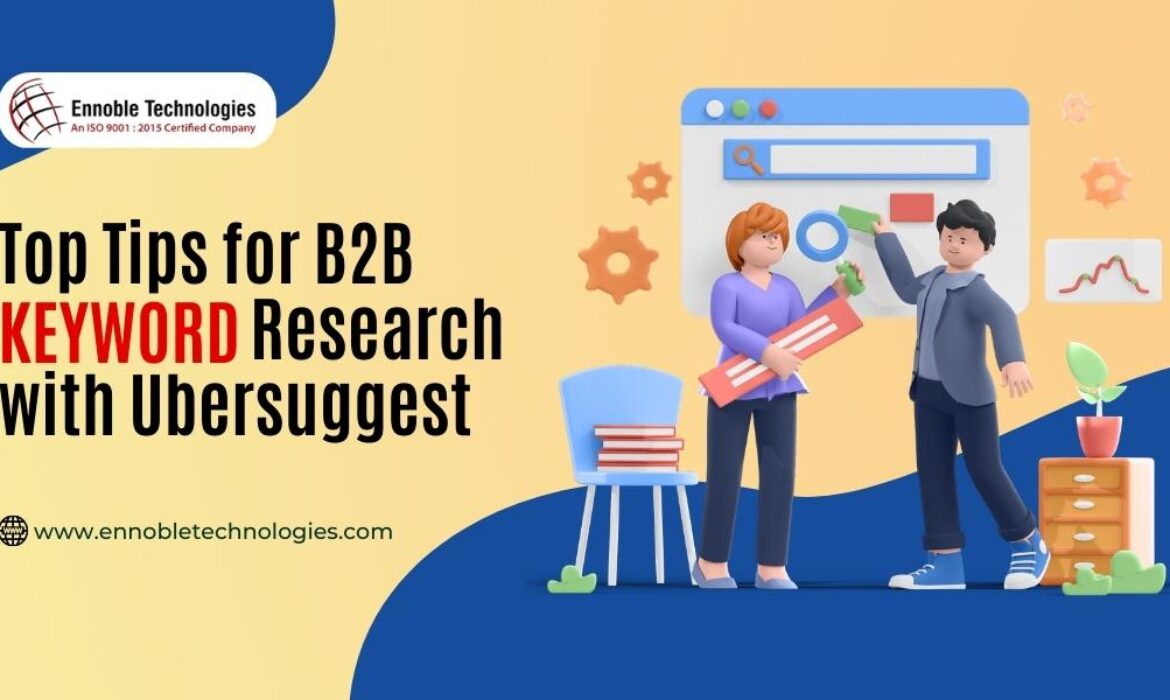Unlocking the Potential: Paid Advertising Strategies for Maximum Impact
Understanding the Power of Paid Advertising
Paid advertising has become an indispensable tool in the digital marketing landscape. It’s a strategic approach that enables businesses to reach their target audience effectively, garnering immediate visibility and engagement. When executed correctly, paid advertising can yield substantial returns on investment (ROI) and significantly impact brand growth.
The Evolving Dynamics of Paid Advertising
In recent years, the realm of paid advertising has witnessed a remarkable evolution. Platforms like Google Ads, social media channels (such as Facebook, Instagram, and LinkedIn), and other digital networks have provided diverse and sophisticated avenues for businesses to promote their products or services. With each platform offering distinct ad formats and targeting options, crafting a tailored strategy for maximum impact has become both an art and a science.

Crafting a Comprehensive Paid Advertising Strategy
- Defining Clear Objectives: Establishing precise goals is the cornerstone of any successful paid advertising campaign. Whether it’s driving website traffic, boosting sales, or enhancing brand awareness, clarity in objectives guides the entire strategy.
- Audience Segmentation and Targeting: Understanding your audience demographics, behaviors, and preferences is pivotal. Leveraging this insight allows precise targeting, ensuring your ads reach those most likely to convert.
- Ad Content and Creatives: Compelling ad content that resonates with the audience is paramount. Utilize persuasive copy, captivating visuals, and engaging CTAs (Call to Actions) to drive user action.
- Optimizing Landing Pages: Ensure that the landing pages your ads direct to are aligned with the ad content and offer a seamless user experience. Optimized landing pages increase conversion rates.
- Monitoring and Analysis: Continuous monitoring and analysis of ad performance provide invaluable insights. Metrics like click-through rates (CTR), conversion rates, and cost per acquisition (CPA) should guide ongoing refinements.
Benefits of a Well-Crafted Paid Advertising Strategy
A strategically devised paid advertising campaign presents a multitude of benefits for businesses:
- Immediate Visibility: Unlike organic methods, paid advertising delivers immediate visibility to the target audience, expediting brand recognition and exposure.
- Precise Targeting: Detailed audience segmentation enables precise targeting, ensuring that ads are shown to those most likely to convert, optimizing ad spend.
- Measurable ROI: With robust analytics tools, measuring the effectiveness of paid campaigns is precise. This data-driven approach allows for continuous refinement and improvement.
- Enhanced Brand Awareness: Consistent visibility across platforms aids in strengthening brand awareness and recall among the audience.
Key Takeaways
Crafting an effective paid advertising strategy involves a meticulous blend of data analysis, creativity, and continuous optimization. Understanding your audience, setting clear objectives, crafting compelling content, and vigilant monitoring are vital components that contribute to maximum impact.
Harnessing the Potential of Google Ads
Google Ads stands tall among the diverse platforms available for paid advertising. Its expansive reach and diverse ad formats make it a powerhouse for businesses aiming to amplify their online presence.

Ad Types and Customization
Google Ads offers various ad types tailored to different business goals:
- Search Ads: Displayed at the top of search engine result pages, these ads target users actively searching for specific keywords.
- Display Ads: These visually appealing ads appear across the Google Display Network, spanning a wide array of websites and apps.
- Video Ads: Capitalize on the popularity of YouTube and engage users through compelling video content.
- Shopping Ads: Ideal for e-commerce, these showcase product images, prices, and businesses’ names right at the top of Google searches.
Customization within Google Ads allows for precise targeting, scheduling, and budget allocation. Leveraging features like location targeting, ad extensions, and remarketing can significantly enhance ad performance.
Maximizing Social Media Platforms
The landscape of social media platforms offers a diverse range of opportunities for paid advertising:
- Facebook Ads: With its extensive user base and detailed targeting options, Facebook Ads enable businesses to reach specific demographics effectively.
- Instagram Ads: Leveraging visually engaging content, Instagram Ads tap into the platform’s highly visual nature, capturing user attention.
- LinkedIn Ads: Ideal for B2B marketing, LinkedIn Ads offer precise targeting options based on job titles, industries, and professional demographics.
Each social media platform provides unique ad formats and targeting options. Crafting tailored ad campaigns optimized for each platform maximizes audience engagement.
Budget Allocation and Optimization
A crucial aspect of paid advertising lies in effective budget allocation and continuous optimization. Distributing budgets across different platforms and ad types based on performance analysis is key. Constantly testing ad variations, refining targeting parameters, and optimizing landing pages contribute to maximizing ROI.
Understanding Your Audience: Key to Success
Before diving into any advertising venture, comprehending your audience is pivotal. Conduct thorough research to identify their demographics, preferences, and behaviors. Utilize analytics tools to glean insights and craft targeted campaigns that resonate with your audience’s needs and interests. Aligning your message with their desires enhances engagement and conversion rates.
Crafting Compelling Ad Copies
Captivating ad copies play a crucial role in capturing audience attention. Craft compelling, concise, and persuasive copies that highlight your unique value proposition. Incorporate relevant keywords naturally to boost search visibility and entice potential customers. A clear and compelling call-to-action (CTA) prompts users to take the desired action, driving conversions.

Harnessing the Power of Visuals
In the realm of paid advertising, visuals wield immense influence. Utilize captivating images, videos, or infographics that complement your message. Visual content not only grabs attention swiftly but also enhances comprehension and retention. Ensure consistency in branding across visual elements to reinforce brand identity and foster trust.
Strategic Bid Management and Budget Allocation
Optimizing bids and allocating budgets strategically can significantly impact your campaign’s performance. Employ data-driven insights to adjust bids based on ad performance, ensuring maximum ROI. Allocate budgets wisely across platforms and campaigns, focusing on high-performing channels to maximize impact.
A/B Testing for Continuous Improvement
Continuous refinement is key to sustained success in paid advertising. Implement A/B tests to experiment with various elements such as headlines, visuals, or CTAs. Analyze the results meticulously to identify the most effective components and iterate for ongoing improvement.

Embracing Diverse Advertising Platforms
Diversifying your advertising platforms mitigates risk and expands your reach. Explore diverse platforms like Google Ads, social media ads, or native advertising to tap into varied audience segments. Tailor your approach based on platform-specific nuances to optimize results.
Tracking and Analyzing Performance Metrics
Monitoring and analyzing performance metrics are fundamental to refining your strategies. Track key metrics such as click-through rates, conversion rates, and return on ad spend (ROAS). Use these insights to fine-tune your campaigns, emphasizing high-performing aspects for optimal results.
Conclusion
Mastering paid advertising strategies demands a blend of creativity, data-driven insights, and continuous optimization. By understanding your audience, crafting compelling content, leveraging visuals, and refining strategies based on data analysis, you can propel your advertising campaigns to new heights of success. Embrace experimentation, adapt to changes, and stay abreast of industry trends to stay ahead in the competitive landscape of paid advertising.
Also Read: A/B Testing: Fine-Tune Your Ads for Optimal Results – Ennoble Technologies
Top Tips for B2B Keyword Research with Ubersuggest
B2B keyword research is crucial for every business. It is necessary to get more leads, increase website traffic, and improve search engine rankings. With the help of powerful tools like Ubersuggest, businesses can get and use effective keyword strategies to reach their target audience and achieve their market goals. This article will explore top tips for B2B keyword research with Ubersuggest. Also, we will learn how you can leverage this powerful tool to improve keyword strategy and grow more with your business.
What is B2B Keyword Research?
B2B is business-to-business, which refers to marketing and selling products or services from one business to another. B2B keyword research is the process of identifying and analyzing the keywords that businesses use to search for products or services. These keywords are relevant to the needs of their business. Ubersuggest is a helpful tool that anyone can use to conduct effective keyword research. The tool will help you identify the right keywords, analyze their competitors, and develop keyword strategies that drive more traffic and generate higher leads. Keyword search volume, keyword difficulty, and CPC (cost per click) are among the excellent features and services it provides.
7 Top Tips for B2B Keyword Research with Ubersuggest
1. Understanding Who Your Target Audience Is
The first step in B2B keyword research is identifying your target audience. This means understanding their search intent as well. Ubersuggest can be used to know the most common search queries and topics your target audience seeks.
Understanding customers’ search intent helps in knowing their interests which will help you create relevant content that satisfies their needs. You can gather information through different methods, such as customer surveys, website analytics, and other market research.
2. Identifying the Right Keywords
Once you have closely examined your target audience, the next step should be identifying the right keywords. Ubersuggest offers features that can help you conduct keyword research and analyze keyword metrics. However, there are different keywords: short-tail, long-tail, and branded.
You can rely on this tool to find relevant keywords that are easy to rank and have a high search volume. You can also try social media and customer feedback to gain valuable information.
3. Creating a List of Potential Keywords
With the information you collected, you can start developing a list of potential keywords and phrases that your target audience may use to search for your products or services. This list can be used as a starting point for keyword research.
4. Analyzing Your Competitors
Analyzing your competitors’ websites can help you go ahead with them. Identifying your top competitors is beneficial in analyzing their keywords and content to understand their strengths and weaknesses.
Ubersuggest can be used to compare your website’s performance with your competitors. By analyzing your competitors, you can know the weaknesses in your content strategy and improve your keyword research strategy.
5. Creating a Keyword Strategy
After you have identified the right keywords and analyzed your competitors, the next thing to do is to create a keyword strategy. This involves developing a list of high-value keywords and putting them into relevant content.
With the help of this research tool, you can track your keyword ranking and make significant progress over time. Also, it will help you change your strategy and improve your website’s performance.
6. Using Long-Tail Keywords
In addition, businesses should also focus on long-tail keywords – such as specific keyword phrases that are usually less competitive but are more targeted to their ideal customer. The tool can help businesses identify and use long-tail keywords in their keyword strategy.
7. Prioritizing Commercial Intent Keywords
At last, one should focus on keywords with commercial intent that indicate what a user is searching for to get the product or service. Identifying and prioritizing keywords with commercial intent in their keyword strategy can help generate effective ideas.
Additional Tips for Effective B2B Keyword Research
Apart from that, here are some additional tips for making B2B keyword research effective:
- Stay up-to-date with the latest trends in your industry and changes in search engine algorithms.
- Continuously analyze and replan your keyword strategy to improve your website’s performance.
Conclusion
B2B keyword research is a crucial aspect of any business’s marketing strategy. Using powerful tools like Ubersuggest, businesses can make keyword research effective, identify keywords, analyze their competitors, and develop a keyword strategy that drives traffic and generates leads. By following the tips mentioned in this article, businesses can get better at doing B2B keyword research.





